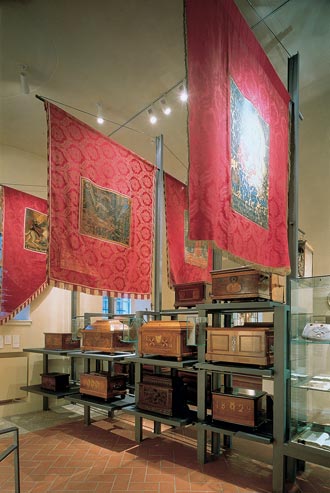Permanent Display 18. The Guilds of Gradec and Kaptol
 Guilds were associations of members of a craft or trade that were formed throughout Europe to promote the welfare of that craft and its members.
Guilds were associations of members of a craft or trade that were formed throughout Europe to promote the welfare of that craft and its members.
The first guild in Gradec was founded by King Matthias Corvinus in 1447. In the following centuries eighteen guilds were formed in Gradec. The first guild at Kaptol was established much later - in 1627. In the course of the 17th century, another six guilds were established. In the mid-nineteenth century four associated guilds were formed of the craftsmen of Kaptol and Gradec.
Each guild had its own regulations, a patron saint, a standard and a chest for the safekeeping of documents, the seal and the money of the guild, and the guild plate for convening meetings. On the day of the patron saint, the members assembled in the house of the guildmaster, who was responsible for quality control, acted as guild manager and accountant and approved master craftsmen. The guild provided for the elderly and the sick, and the widows and children of its deceased members.
Apprenticeship lasted between three and five years, after which the apprentice became a journeyman who had to travel (vandrati) from place to place to get experience. In order to be admitted to the guild as master craftsman, a journeyman had to prepare a masterpiece.
Vignettes on journeymen’s certificates show what Zagreb looked like at the end of the 18th century, when it had only about seven thousand inhabitants.
The Law on Crafts and Trades of 1872 abolished the guilds in Zagreb because they had become an impediment to the economic development of the city.
Nada Premerl

